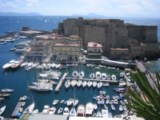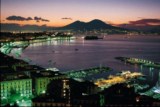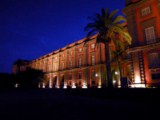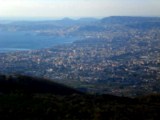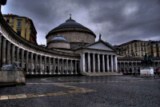|
NAPLES - CAMPANIA - SOUTH ITALY LOCAL CUISINE HISTORY AND BACKGROUND The largest city of Campania, capital of the province and the region, Naples is the third most populated city in Italy (after Rome and Milan), with over a million inhabitants, and is the most important industrial center and trading port for the South. It is situated halfway down the Tyrrenia coast, at the innermost point of the Bay of Naples, between Vesuvius and the Phlegrean Fields.
Neapolitan cuisine has created dishes that have not only become part of Italian national cuisine, but are of international renown. Take spaghetti and pizza, for instance. More unusual are the "timballo di maccheroni" (macaroni timbale), "zuppa di soffritto" (fried soup) or "pasta ammiscata", a popular soup made by mixing up the leftovers of various kinds of pasta. Naples seafood specialities must not be forgotten. These include "impepata di cozze" (spiced mussels), mixed seafood salads, a vast selection of spaghetti served with various seafood sauces, "zuppa di pesce" (fish soup), and grilled and fried fish. The classical dessert is the "pastiera", a cake made with sweet pastry and ricotta cheese. The original nucleus of the city can be found on the little island of Megaride. Occupied today by Egg Castle (Castel dell' Ovo), it was first a settlement of the Aegean Greeks, then the Rodi, followed by the Cumani, in the seventh and sixth centuries B.C. The Cumani also occupied the Pizzofalcone heights and named the city Palaepolis (Old City). Around the fifth century B.C., Neapolis (New City) arose in the surrounding areas, exercising strong cultural influence based on its Greek roots. In the following century it was occupied by the Romans, surrounded by walls and characterized by blocks of streets formed in grids. Later it was occupied by the Byzantines, then the Goths, and then became capital of an autonomous dukedom. After a brief period of Longobard dominion, it fell under Norman control, until Ruggero II of Altavilla, King of Sicily, was able to add it to his kingdom in 1139. With the Angevin conquest in 1266, Naples became the capital and experienced notable demographic and urban growth. New growth occurred with the arrival of Alfonso of Aragon and with the reign of his successors (fifteenth century). After Charles VIII of France, the Spanish took over in 1503. Naples rose to the dignity of being a capital again in 1734 under the Bourbons, who reigned there until September 1860 (except during the brief French parenthesis, 1806-1815), at which time it was annexed to Garibaldi's Italy. The bombardments of the Second World War, aggravated by the resistance of the German troops, caused death and destruction to the patrimony of population and of art. However, the Parthenopaean population gained victory on October 1, 1943, after four days of bitter fighting. (Note: The mythical tomb of Parthenope, a siren, was supposedly at the site where Naples grew up. As a result, the city has become known as Parthenopaea.) |
||||||||


